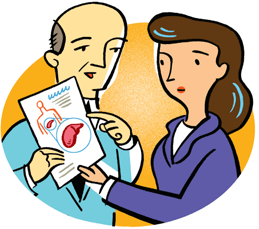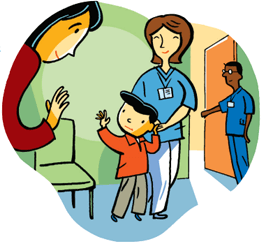When general anesthesia is needed, there are important rules for eating and drinking that must be followed in the hours before the test. One business day before your child’s test, you will receive a phone call from a nurse between the hours of 1 and 9 p.m. (Nurses do not make these calls on weekends or holidays.) Please have paper and a pen ready to write down these important instructions.
- The nurse will give you specific eating and drinking instructions for your child based on your child’s age. Following are the usual instructions given for eating and drinking. No matter what age your child is, you should follow the specific instructions given to you on the phone by the nurse.
For children older than 12 months:
- After midnight the night before the test, do not give any solid food or non-clear liquids. That includes milk, formula, juices with pulp, chewing gum or candy.
For infants under 12 months:
- Up to 6 hours before the scheduled arrival time, formula-fed babies may be given formula.
- Up to 4 hours before the scheduled arrival time, breastfed babies may nurse.
For all children:
- Up to 2 hours before the scheduled arrival time, give only clear liquids. Clear liquids include water, PedialiteTM, Kool-Aid® and juices you can see through, such as apple or white grape juice.
- In the 2 hours before scheduled arrival time, give nothing to eat or drink.
Your child’s procedure will be cancelled if these instructions are not followed.










 Your child’s liver biopsy will be scheduled through the Same Day Surgery Center at Children’s Hospital. The Same Day Surgery Center will call you the day before your child’s liver biopsy to give you your arrival time and go over the eating and drinking instructions.
Your child’s liver biopsy will be scheduled through the Same Day Surgery Center at Children’s Hospital. The Same Day Surgery Center will call you the day before your child’s liver biopsy to give you your arrival time and go over the eating and drinking instructions.